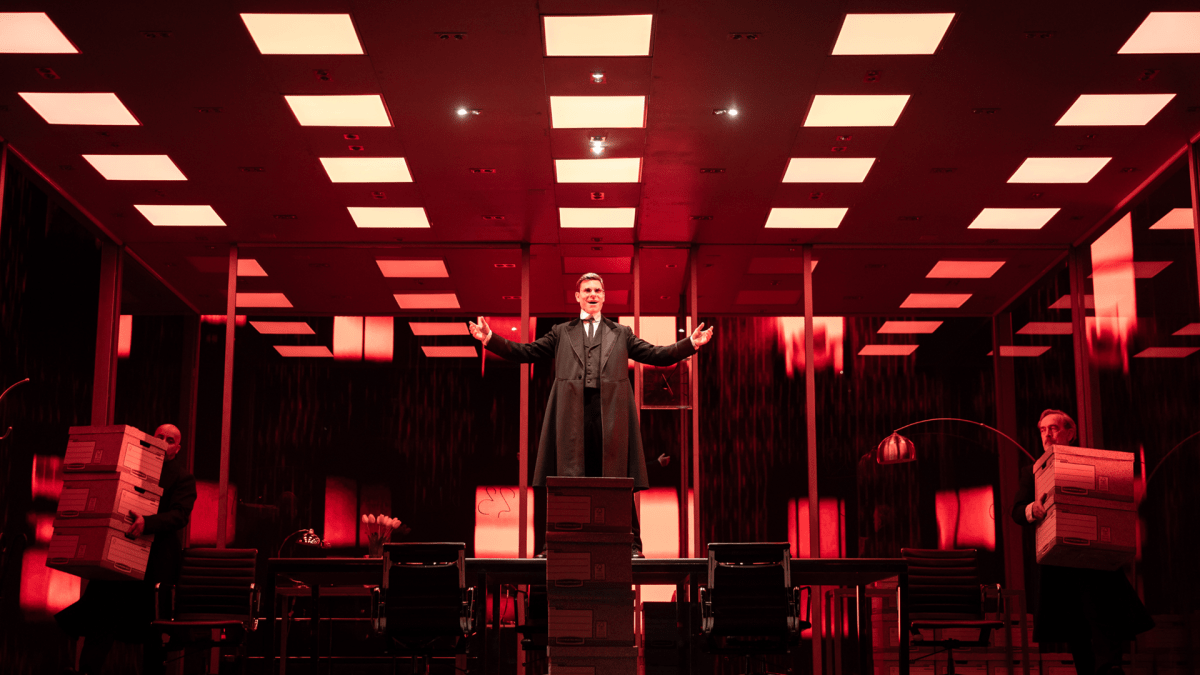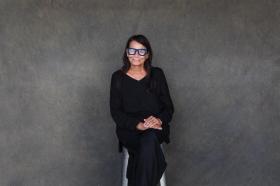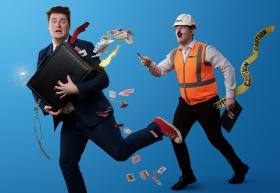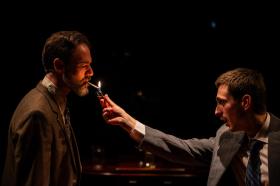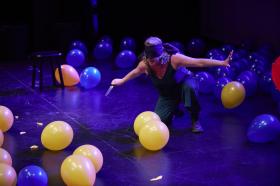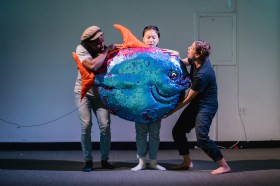Lehman Brothers was once lauded as the fourth largest investment bank in the US. Its collapse, on 15 September 2008, led to the biggest fall in US stock market history and the GFC (global financial crisis). The Lehman Trilogy tells the story that led to this point.
The play opens in a glass and chrome boardroom of the company’s New York headquarters. The table and floor are stacked with the piles of cardboard box files, echoing images of the company’s employees leaving its headquarters in 2008. A news voiceover tells us that Lehman Brothers has declared bankruptcy and the global economy is in a tailspin.
The stage spins and we are taken back to 1843. It’s 11 September and newly arrived emigre Hayum “Henry” Lehman (Adrian Schiller), from Bavaria, Germany, steps ashore in New York wearing his best shoes, kept especially for that moment. After a month and a half at sea, he has lost 10 pounds (4.5 kilograms) in weight, learned to drink and play cards, and has ‘grown a beard as thick as a Rabbi’s’. Under the shadow of the Statue of Liberty, an immigration official calls him Henry, and says ‘Welcome to America’.
It’s the start of rags-to-riches story of how Henry’s small business selling cheap cotton clothing to poor people in Alabama becomes a global powerhouse. Henry works hard to pay off debts, earning little more than the respect of the local cotton plantation owners. But his shop never closes and, when joined by his two brothers, the irascible Emanuel (Howard W Overshown) and Mayer (Aaron Krohn) with his ‘face as smooth as a peeled potato’, the newly named company Lehman Brothers becomes integral to the cotton trade, then coffee, railways and oil. It survives the US Civil War, the Wall Street Crash of 1929, two World Wars, a pandemic and an atomic bomb. Its founders observe the practices of their faith and are guided by its moral compass. They marry and invest in the arts, education and welfare.
It’s the story of the American Dream – how a lowly immigrant can achieve success in ‘the land of the free and the home of the brave’ through hard work, ingenuity and determination. However, the play is as much about what is not there as what is. Women are reduced to caricatures, the suffering of the slaves who work the cotton plantations, and form the bedrock of the brothers’ success, largely ignored and world crises reduced to an opportunity to make more money.
The only sense of grief expressed is for city traders who, on the day of the 1929 Wall Street Crash, shoot themselves and jump from office block windows. It is the business that matters, the ‘making money to make more money’.
By the third act, the dynasty, and its moral foundations, are crumbling. The relentless pursuit of profits leads to investment in the weapons of war and encouraging people to ‘borrow money they don’t have to buy things they don’t need’. Computers bring the opportunity to make even more money. Eventually, the business is just about numbers. By the time the last of the Lehman dynasty dies, the Jewish tradition of a week of mourning is replaced by a three-minute silence. Industry deregulation leads to the subprime mortgage scandal and the company’s collapse, its legacy and reputation a byword for corporate greed and excess.
All of the parts in the production are played by just three actors. They deftly switch between portraying the brothers, their wives, business associates and friends using just a gesture here and a change in tone and inflection there. It’s a remarkable feat and testament to the consummate skill and international standing of the actors.
The direction (Sam Mendes), set design (Es Devlin) and music (Nick Powell) subtly yet sublimely unite the play’s themes. The revolving stage takes us back and forth from Alabama to New York, reminding us perpetually of the tragedy that is to come as the Lehman Brothers’ story unfolds.
Behind, monochrome videos of the landscapes of New York and Alabama project on an expansive screen. The monochrome is only broken three times, when depicting the family’s nightmares, echoing Joseph’s dreams of imminent disaster in the Genesis chapter of the Bible. They reflect the company’s shift from dealing in tangible assets, such as coffee, to the abstraction of the market and investment, the drive to continually expand and find new horizons, and the fallacy of the notion of perpetual growth.
Throughout, a subtle piano score, composed through improvisation during rehearsals, hauntingly reminds us of the consequences of the breakdown in compassion and conscience.
Read: Theatre review: The Hate Race, Malthouse Theatre
Other factors also influenced the collapse of Lehman Brothers. It was an US election year and politicians were under pressure to restrict bank bailouts, but the message at the end of the play is clear. When greed and power are allowed free rein, unchecked by a moral compass, disaster follows.
The Lehman Trilogy is an ambitious and epic play. In its three and a half hours (three one-hour acts with two short intervals) it packs in 164 years of history. Don’t let its running time put you off, however. You will walk out wanting to see it again. And its message will linger even longer.
The Lehman Trilogy
Theatre Royal, Sydney
Director: Sam Mendes
Piano: Cat Beveridge
Set designer: Es Devlin
Video Designer: Luke Halls
Composer and Sound designer: Nick Powell
Cast: Adrian Schiller, Howard W Overshown, Aaron Krohn
The Lehman Trilogy will be performed until 24 March 2024.
